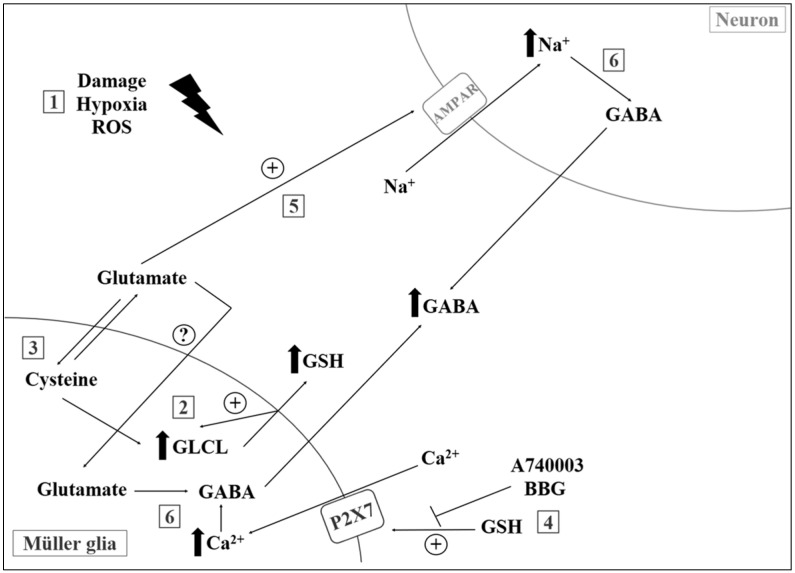Figure 1.
Mechanisms of functional compartmentalization mediated by glutathione in the retinal environment. Tissue damage, hypoxia, and reactive oxygen species (ROS) (1) promote increased activity of antioxidant system intermediates in Müller glial cells, such as γ-glutamylcysteine ligase (GLCL), which stimulates the synthesis/release of glutathione (GSH) (2) and the uptake of cysteine through a glutamate-cysteine antiporter system (3) When released, GSH is capable of activating P2X7 receptors, allowing for intense Ca2+ increase in the Müller cells (4) while extracellular glutamate promotes activation of AMPA receptors (α-amino-3-hydroxy-5-methyl-4-isoxazolepropionic acid receptors, or AMPAR) in retinal neurons, leading to higher Na+ levels in these cells (5) Finally, intracellular Ca2+ (glia) and Na+ (neurons) stimulate GABA (gamma-aminobutyric acid) release to the extracellular environment (6). (+) Activation/stimulus. (?) Unknown mechanism.

